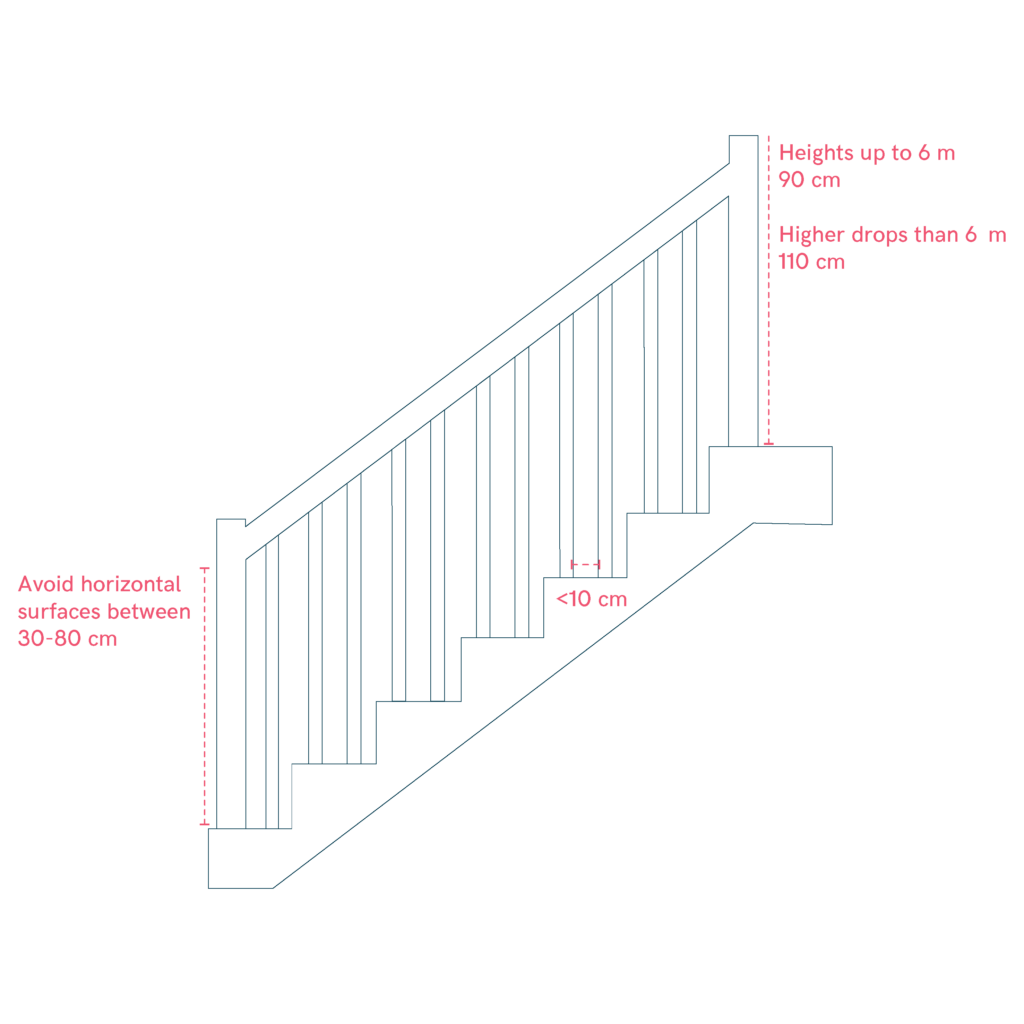Protection Barriers
When designing barriers in public or private spaces, it’s essential to prioritize safety and accessibility for all users, including children and individuals with different needs. Barriers should be designed to prevent accidents while ensuring easy access and usability. Key considerations include maintaining appropriate heights for drops, avoiding features that could encourage climbing, and ensuring that openings are small enough to prevent accidents. Special attention should be given to childproofing in areas where children are present, while also ensuring that barriers remain durable and able to withstand various forces for long-term safety.

- Ensure barriers are at least 0.90 m for heights up to 6 meters, and 1.10 m for higher drops.
- Avoid horizontal surfaces or points of support between 30-80 cm that children could use to climb.
- Ensure no openings larger than 10 cm, except in specific, low-risk cases (e.g., stair railings).
- In areas with children, design barriers to be childproof and compliant with safety standards.
- Ensure barriers remain sturdy and resistant to horizontal forces.
Sources
- https://accessible-eu-centre.ec.europa.eu/content-corner/digital-library/en-172102021-accessibility-and-usability-built-environment-functional-requirements_en
- https://www.access-board.gov/adaag-1991-2002.html#2.%20GENERAL
- https://universaldesign.ie/built-environment/building-for-everyone/building-for-everyone-full-series
- https://www.codigotecnico.org/pdf/Documentos/SUA/DccSUA.pdf
- Carers
- Children
- Cognitive
- Cognitive abilities
- Decolonial perspective
- Digital
- Digital barrier
- Enviroment
- Environmental
- Gender and generations
- Gender perspective
- Hearing impairment
- Low-education
- Low-income
- Older people
- Other
- Physical abilities and features
- Sensory and Physical
- Socioeconomic
- Visual impairment